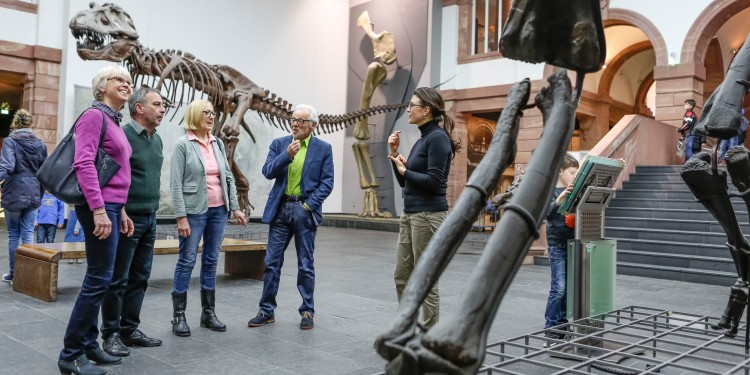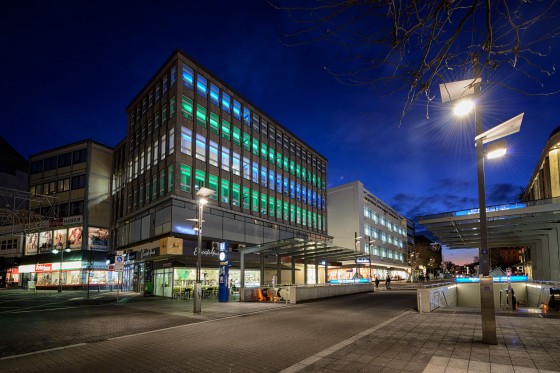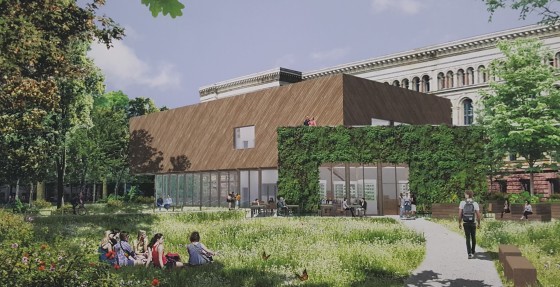
Many roads lead to knowledge transfer
Creating knowledge and transferring it to society is part of our public culture and, as such, one of the central aims which the University of Münster has. Whether it is museums, the Senior Guest Programme and the Children’s University, promoting start-ups, teacher training or science communication: for the University of Münster, knowledge transfer comprises active exchanges between the University and the surrounding region. Over the past six months, the University’s Communications and PR Department has presented a wide-ranging dossier on the subject, also taking in the challenges posed. In concluding the series, we look beyond the University of Münster.
The “Science & Society” programme from the Senckenberg Society for Nature Research
The Senckenberg Society for Nature Research (Senckenberg Gesellschaft für Naturforschung, SGN) is the largest institute within the Leibniz Association (Leibniz-Gemeinschaft) and one of its eight so-called research museums. First and foremost, SGN is one of the most important research institutes in the field of geo-biodiversity, located at eleven sites in Germany. At the same time, Senckenberg operates three museums in Frankfurt am Main, Dresden and Görlitz. Unusually for a research institute, the Society’s legal status permits anyone to become a member. This shows how firmly it is embedded in society – which it has been since its establishment in 1817. Senckenberg still continues this tradition today and numerous public figures play important roles in the Society – whether as members of the active administrative board, as patrons or as one of 700 citizen scientists and 170 voluntary workers. At the same time, it was self-evident for SGN that it should make science and research known to a wider public. In this respect, the museums play a major role – but there are also many other activities through which interaction with the public is steadily increasing.
All these activities are pooled and structured in the “Science & Society” programme, which, after the “Research” and “Infrastructure” programmes, represents the third pillar at SGN. Five sub-programmes are the home of the wide range of activities undertaken by “Science & Society”: Public Relations comprises the press office, social media, the website and popular science publications. The museum offers both permanent and special exhibitions as well as educational programmes. The area of citizen involvement comprises the members, voluntary workers and citizen scientists. The consultancy/advisory programme covers not only the many formal and informal interactions with people in the “political sphere”, but also the provision of expertises and participation in international bodies. And, last but not least, Senckenberg stands for practical applications, patents and product developments.
The author of the commentary, Dr. Sören Dürr is the Director of Communicatons at the Senckenberg Society for Nature Research.
The project Blue Square from the Ruhr University Bochum

The house gives people of all ages and from all educational backgrounds an opportunity to look behind the scenes, get into direct contact with academics and researchers and experience research itself ‘live’. The aim is to show what RUB offers and to make it tangible. The academics proactively seek to engage the public in discussions, addressing them directly, showing them what they are researching into and what the benefits of their research are for society. The Blue Square team organizes numerous events such as talks and panel discussions, in which visitors learn more about research at RUB. The speakers present their subjects in an easy-to-understand way, and there are always opportunities to speak to them and ask questions. In this way, the guests get to hear experts’ views on current topics such as e-mobility, climate change and artificial intelligence – and by including members of the public, researchers obtain different views of their research project. Besides the aspect of gaining new ideas, both ethical and social effects can be discussed, as can the social acceptance of the research in question. To this extent, discussions with the public are a bilateral process which offers benefits to both sides and enables both sides to learn from each other.
An integral part of the programme are cultural offers such as concerts, film showings and readings, as well as creative writing and theatre workshops for children.
The author of the commentary, Belén Daza heads the ‘Blue Square’ at the Ruhr University Bochum.
The project “Exhibition Pavilion and Knowledge Pathways” of the Technical University of Berlin

The special feature of this project is that it will be developed in a participatory, transdisciplinary and sustainable way. The lessons learned from a large number of different teaching and research projects are being incorporated into the designs, the construction and the subsequent running of the project. The basic idea is that the pavilion on the campus will create a place where people can experience and discuss global social issues such as are formulated in the Sustainable Development Goals (SDG). The overall idea is to harness for everyone the knowledge from teaching and research, through exchanges involving the whole of society and through knowledge transfer, as well as to provide stimuli back for this teaching and research.
The aim of the exhibitions in the pavilion is to use the objects and artistic installations there to create opportunities for discussion. Science communication and knowledge transfer take place ‘on site’ through such discussions. The exhibitions will be complemented by events open to the public. This takes up the idea of the hybrid platform, a long-term collaborative project involving the University of the Arts and the TU Berlin.
The project, which is being financed though investment, is aimed to be completed in 2025/26. From the summer of 2020 onwards, the results of the teaching and research projects will be exhibited continuously in the main building of the TU Berlin. From 2021, there will be a pop-up space with the first exhibition and series of events on the subject of “Social Cohesion”.
The author of the commentary, Bettina Liedtke is the Director of the project “Pavilion and Knowledge Pathways” at the TU Berlin.
This article was first published in the University newspaper wissen|leben No. 4, 17 June 2020.
